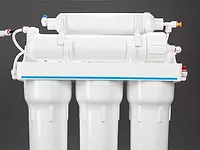Green Kitchens & Baths
What Are You Waiting For?

Whether you design, specify or install kitchen and bath products, you will enjoy this Green Kitchens & Baths supplement. Anyone connected to the building industry knows of the dramatic shift to environmentally friendly construction practices. But until recently, the majority of products have focused on the building envelope, interiors and furnishings. The pickins were slim when it came to outfitting kitchens and baths.
No more! Now, manufacturers of faucets, fixtures, appliances, water delivery systems, ventilation, lighting, cabinets and flooring have unleashed a wave of products that are both stylish and resource-conscious.
Designers are taking up the challenge by presenting clients with more “green” options. Similar to the introduction of large entryways, third bathrooms and flat screen TVs, higher-end clients - both residential and commercial - often are among the first and most responsive to green initiatives.
True, some of today's green products require a premium price and may have a longer payback. But count on the types of designs spotlighted in this supplement to spawn future generations of even more eye-appealing and cost-efficient options. And there is plenty of good news right now (assuming occupants practice proper use).
Today's refrigerators require just 20 percent of the energy needed to run those of 30 years ago.
Water-conserving toilets and other fixtures slash water use by more than 50 percent.
On-demand or instantaneous water heaters save substantial energy and water.
Daylighting, controls and reduced-wattage lights can brighten kitchens and baths for a fraction of former costs.
If you build it - or design it - will they come?
More importantly, will they buy it? A recent NY Times article (“So Green, It's Platinum”) featured the opening of the Robert Redford Building in Santa Monica, Calif. The $5.1 million, 15,000-square-foot home of the Natural Resource Defense Council is designed to showcase green design and products for visitors. It contains a groundbreaking grey water system, dual-flush toilets that use as little as 0.6 gpf, photovoltaic panels that provide 20 percent of its electricity, and a plethora of environmentally friendly interior and mechanical products. Yet the façade is purposely conventional so visitors don't equate green construction with overly exotic design, a deal breaker for those concerned about resale values.Can the average family remodeling their kitchen or bath, or a commercial building owner rehabbing a facility, rely on green design to provide a safe return on investment? Will they be able to sell their buildings if perceived as too green?
That's where you come in. You are the architects, specifiers and contractors who design and install kitchens, baths and much more. Take time to review the variety of outstanding designs and products featured in this supplement. Visit the Environmental Design + Construction Web site (www.edcmag.com) to learn even more. Ask your suppliers and reps. to alert you to products that are efficient, healthy, recycled or sustainable.
Given reasonable choices, most people will select designs that produce cleaner indoor air and water, use fewer resources, and allow them to enjoy a more natural environment. Perhaps your company will lead the market in delivering green kitchens and baths. And there's a nice benefit to those who become leaders: they often make more “green” than their less forward-thinking competitors.
Tim Fausch
Publishing Director
Looking for a reprint of this article?
From high-res PDFs to custom plaques, order your copy today!






